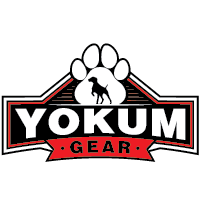Ensuring your canine companion has a designated bathroom area is crucial for maintaining a clean home and a happy pet. Whether you're training a puppy or managing an adult dog, the right setup can make a world of difference. Here are some essential tips and tricks for creating the perfect doggy toilet.
Selecting the Ideal Spot
The first step in creating a doggy toilet is choosing the right location. Ideally, this spot should be easily accessible to your dog but not in high-traffic areas. A corner of the yard, a balcony, or a designated indoor spot with a litter box or pad can work well. Remember, consistency is key. Choose a location and stick to it, so your dog knows exactly where to go.
Outdoor vs. Indoor Options
Depending on your living situation, you may need to decide between an outdoor or an indoor toilet area. Outdoors, a plot of dirt or grass usually works best. Indoors, consider artificial grass pads, dog litter boxes, or absorbent pee pads. Each option has its advantages and disadvantages:
- Outdoor: Natural environment, no odor concerns, but weather and garden aesthetics may be an issue.
- Indoor: Convenient for apartments or during bad weather, but requires regular cleaning and odor management.
Materials Needed
Equipping your doggy toilet with the right materials is crucial for success. Here's a list of items you may need:
- Training Pads: Absorbent and easy to replace, perfect for indoor setups.
- Artificial Grass: Mimics outdoor grass, reusable but requires regular cleaning.
- Dog Litter: Similar to cat litter, designed for dogs and easy to manage.
- Pee Posts: Encourages males to aim properly; scent-attributing products can also attract dogs to the spot.
Training Your Dog
Training your dog to use the designated toilet area requires patience and consistency:
- Establish a Routine: Take your dog to the designated spot immediately after meals, naps, and playtime.
- Use Commands: Choose a command (like go potty) to associate with the action. Use it consistently until they understand.
- Reward Success: Praise and reward your dog with treats and affection whenever they use the correct spot.
- Supervise Initially: Keep a close eye on your dog, especially during training periods, to correct mistakes promptly.
Dealing With Accidents
Accidents are a part of the training process. When they happen, it's important to manage them without discouraging your pet:
- Stay Calm: Never punish or scold your dog for accidents, as this can cause fear and confusion.
- Clean Thoroughly: Use enzymatic cleaners to remove any traces of odor, preventing your dog from being attracted back to the same spot.
Maintenance Tips
Keeping the doggy toilet area clean is important for both hygiene and encouraging continued use:
- Regular Cleaning: Clean indoor pads or litter daily, and sanitize artificial grass weekly.
- Replace Materials: Swap out used training pads or litter materials as they become soiled.
- Odor Control: Use pet-safe deodorizers and keep the area ventilated to manage odor.
Conclusion
Creating the perfect doggy toilet requires thoughtful planning and dedication, but the benefits of a well-trained dog are worth the effort. By selecting an appropriate location, choosing the right materials, and employing consistent training and maintenance practices, you can ensure your furry friend knows exactly where to go, keeping your home clean and reducing stress for both of you.

